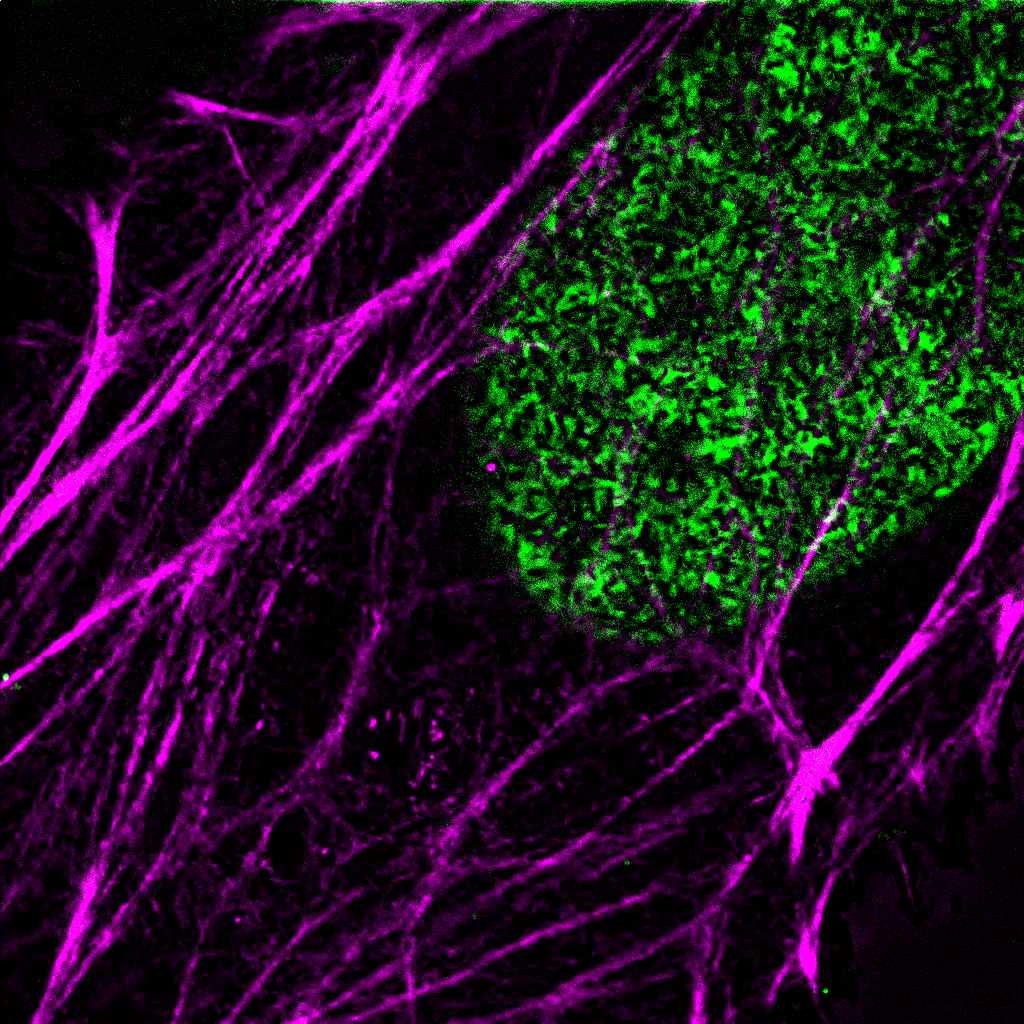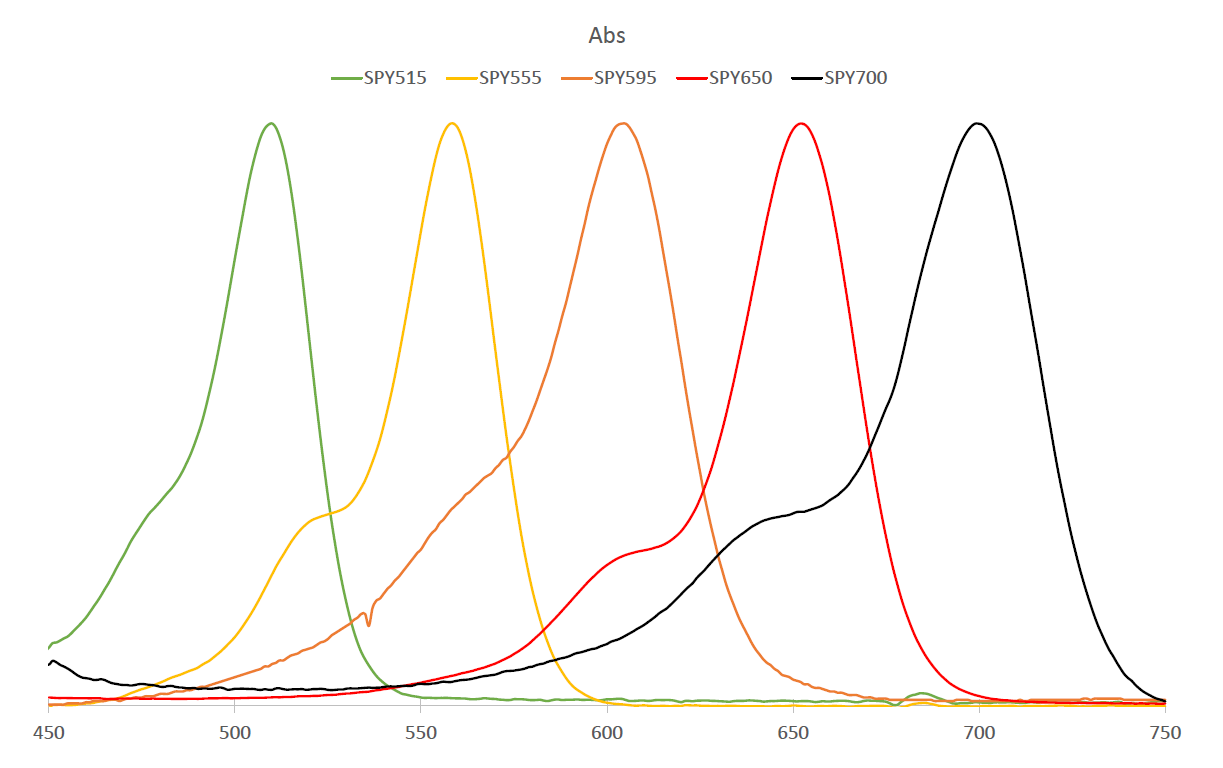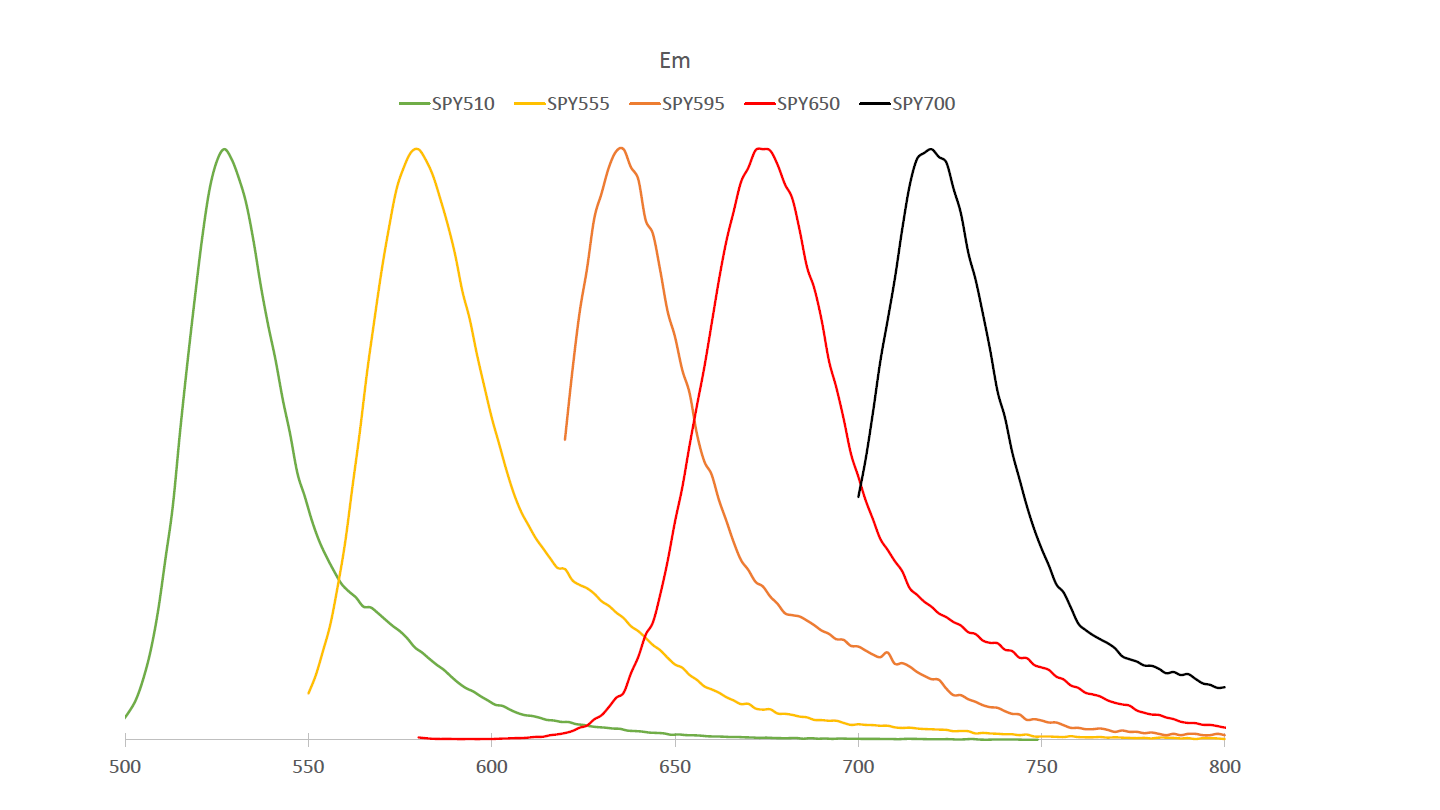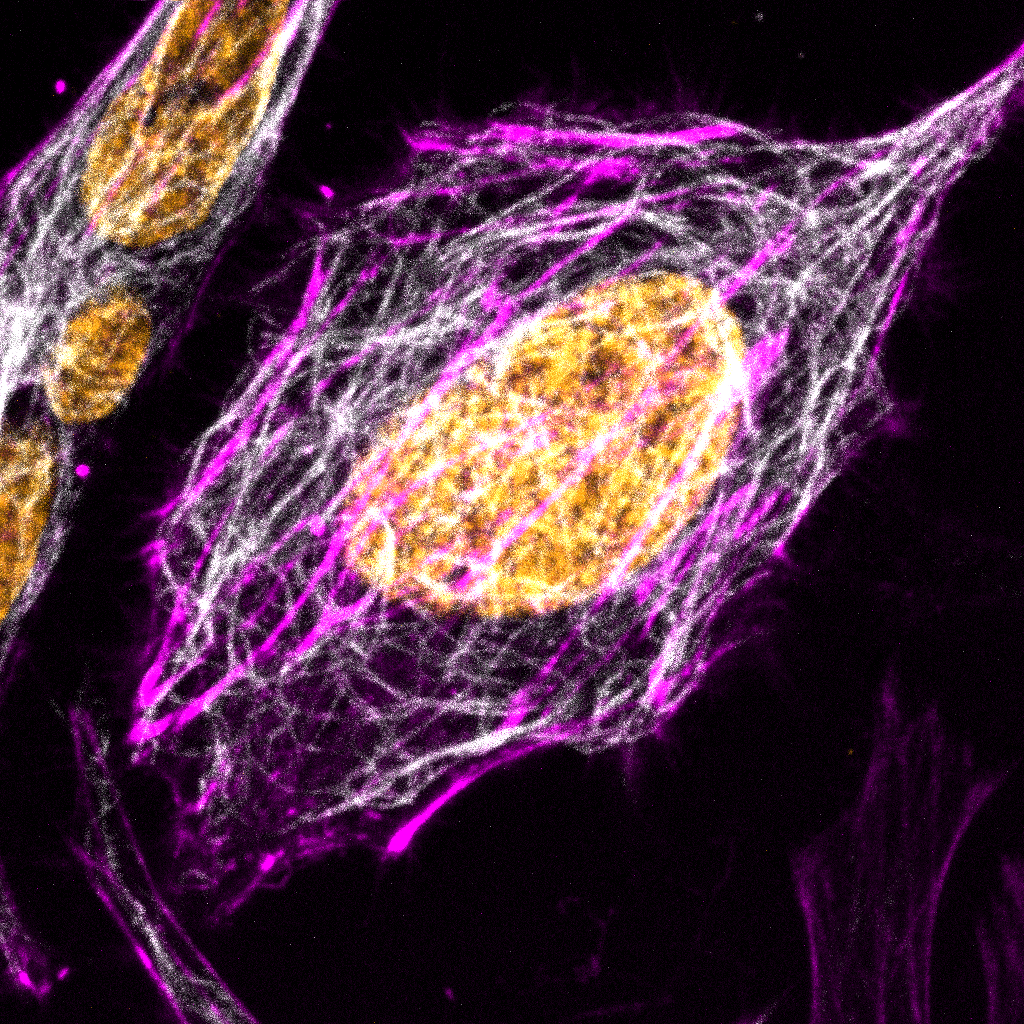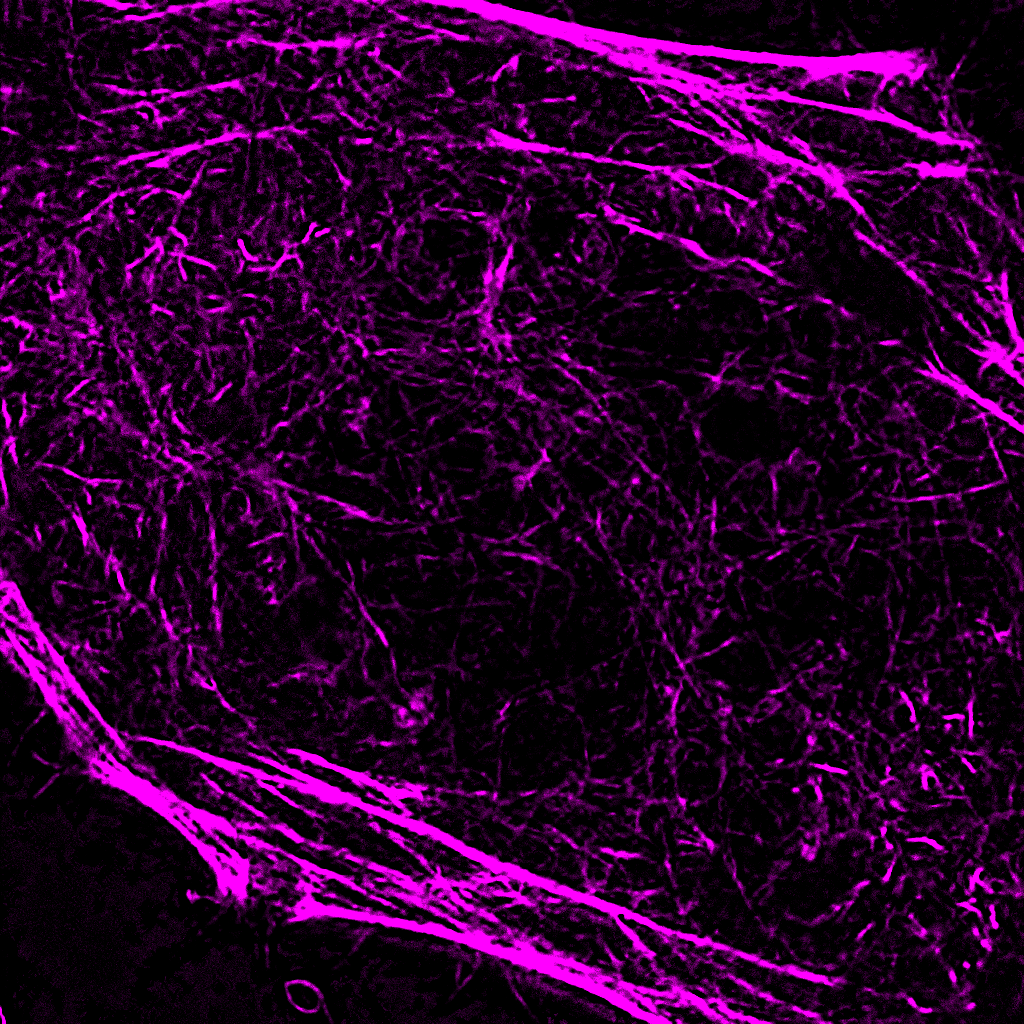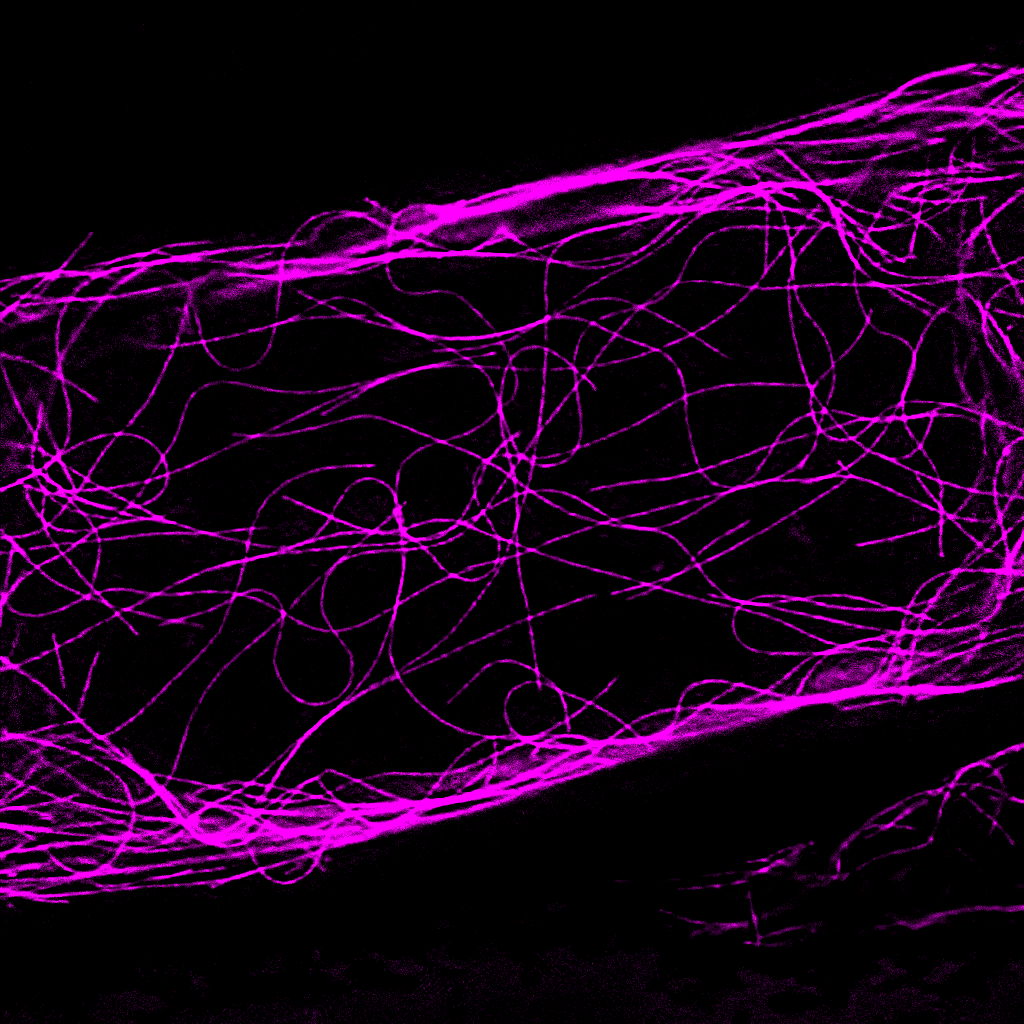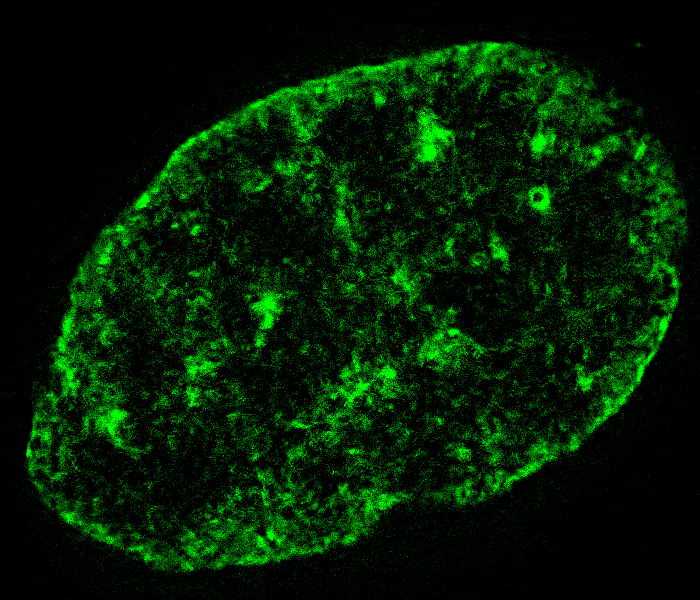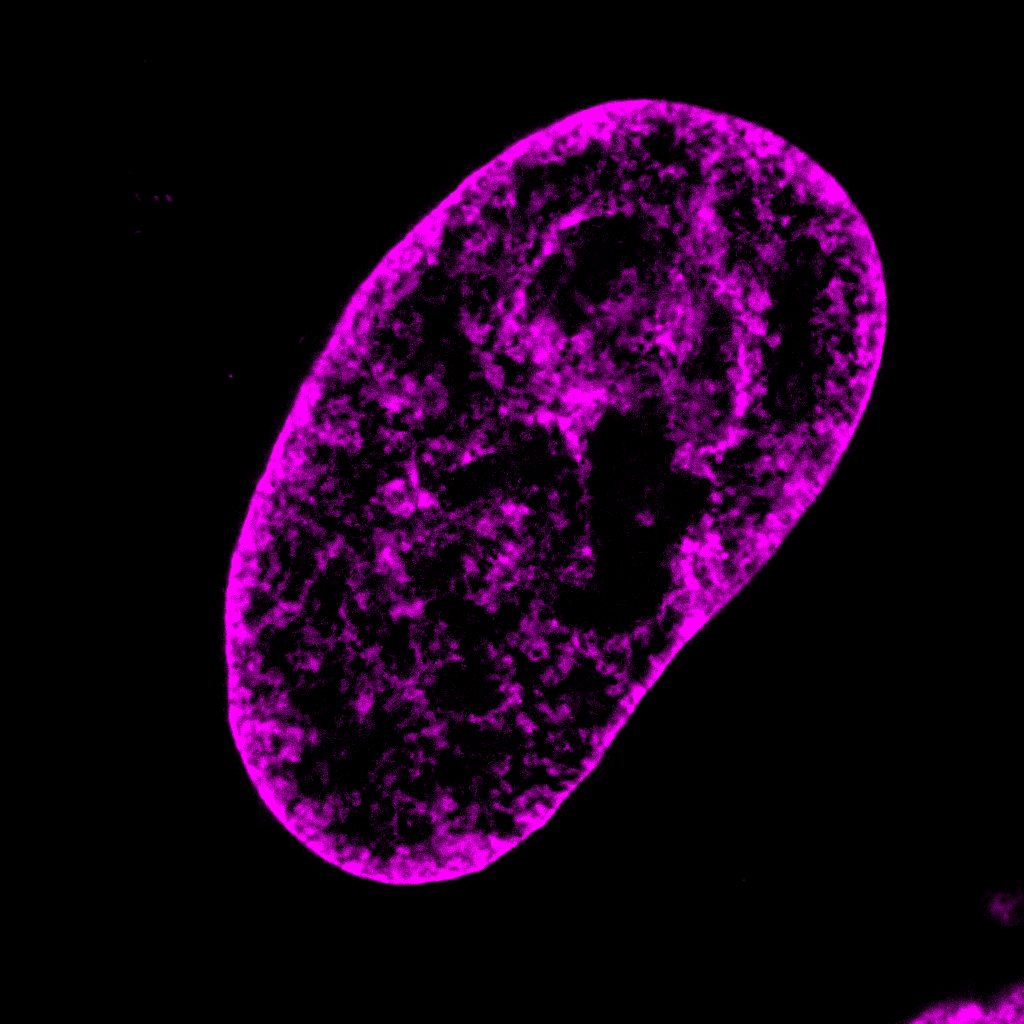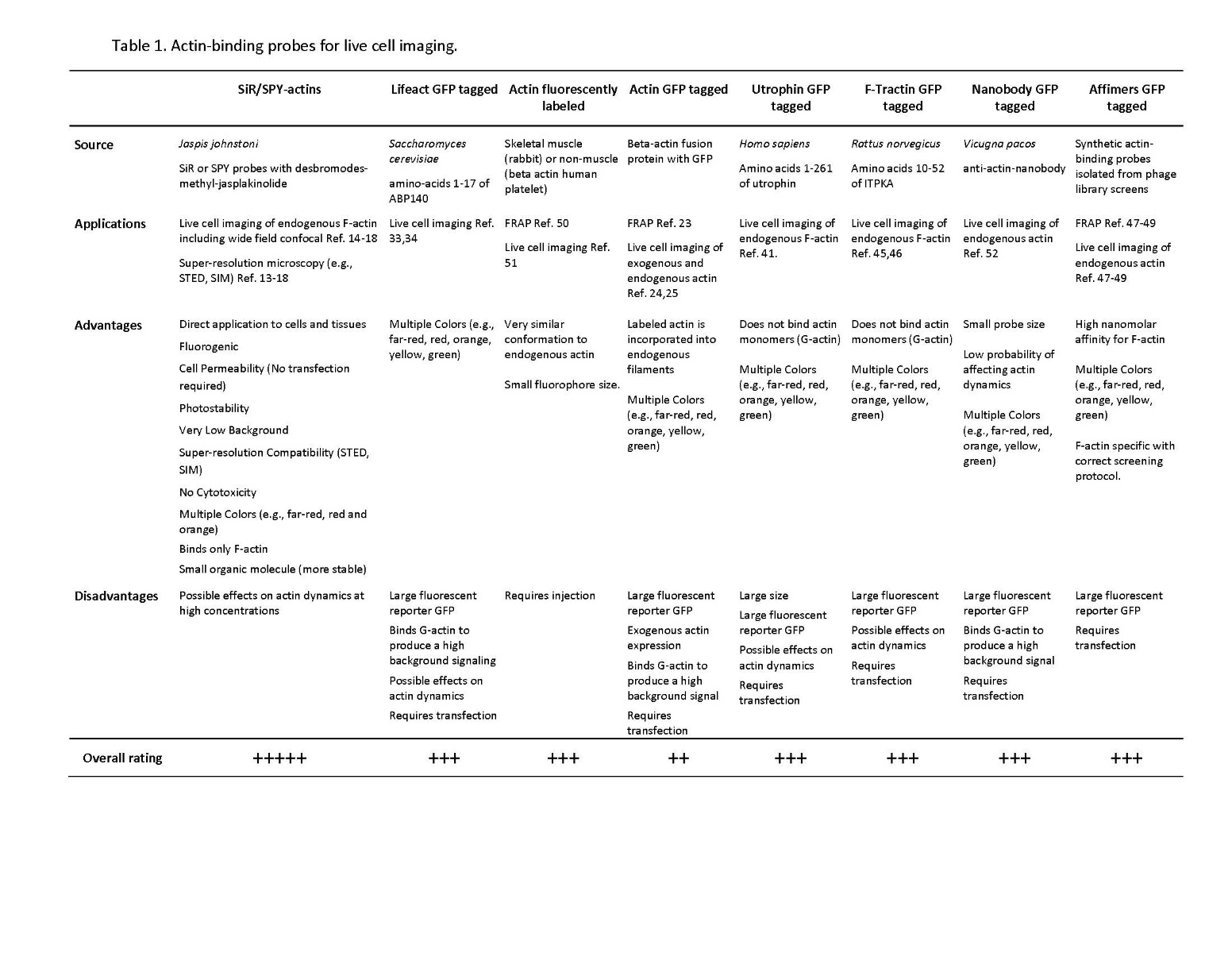Spirochrome's New SPY™ Probes
In 2015, Cytoskeleton introduced multiple live cell imaging probes from Spirochrome Ltd. These revolutionary probes simplifed and stream-lined the live cell imaging of microtubules (SiR-Tubulin), F-actin (SiR-Actin), lysosomes (SiR-Lysosome), and chromosomal DNA (SiR-DNA). Based on the proprietary fluorophore silicon rhodamine (SiR), the original SiR probes introduced a new era in live cell imaging of cytoskeletal proteins, lysosomes, and DNA. These fluorogenic, bright, and photostable probes with low background and cytotoxicity represented a major improvement in live cell imaging probes that had been use for decades. These game-changing SiR probes are defined by multiple positive features and improvements over other live cell imaging probes, including:
- Cell Permeability (No Transfections)
- Photostability
- Very Low Background
- Super-resolution Compatibility (STED, SIM)
- Far-Red Fluorophore (Cy5-compatible)
- Fluorogenic Nature
- No Cytotoxicity
Now in 2019, Cytoskeleton is excited to introduce the next generation of Spirochrome’s live cell imaging probes – the SPY™ probes. SPY™ probes improve upon the SiR and SiR700 live cell imaging probes in the far-red channels while also expanding the fluorophore labeing options for the study of F-actin, microtubules, and DNA in living cells. Fluorogenic live cell fluorescent probes are now available in the green, orange, red and far-red channels (see excitation and emission spectra figures below).
SPY™ probes capitalize on all of the benefits and advantages of SiR probes, while also offering substantial improvements which include:
- Fluorogenic Nature – background is even less than that of SiR and SIR700 probes
- Multiple Fluorophore Options (e.g., far-red, orange, red, and green)
- Sensitivity and Selectivity
- Improved Cell Permeability
- Follows the same protocols as for SiR with shorter incubation times and lower concentrations (probes last longer and are less likely to affect cytoskeletal dynamics)
- No Cytotoxicity
New SPY Actin Probes
SPY555-actin (Cat. #CY-SC202) is an F-actin probe with performance similar to SiR-actin (Cat. # CY-SC001) but in the tetramethylrhodamine (TMR) channel with a recommended optimal excitation setting of 555 nm and emission setting of 580 nm. SPY555-actin should be imaged in a standard TMR or Cy3 channel using the same staining protocol as for SiR-actin (Cat. # CY-SC001). The recommended live cell staining conditions from Spirochrome scientists are 100 nM for 2 hours.
New SPY Tubulin Probes
SPY555-tubulin (Cat. #CY-SC203) is a microtubule probe that has performance superior to SiR-tubulin (Cat.# CY-SC007) but in the tetramethylrhodamine (TMR) channel with a recommended optimal excitation setting of 555 nm and emission setting of 580 nm. SPY555-tubulin should be imaged in a standard TMR or Cy3 channel using the same general staining protocol as for SiR-tubulin (Cat. # CY-SC002). However, as SPY555-tubulin is much more cell permeable than SiR-tubulin, the recommended live cell staining conditions from Spirochrome scientists are 10 nM for 2 hours.
SPY650-tubulin (Cat. #CY-SC503) is a modified version of SiR-tubulin (Cat. # CY-SC002) as it is also conjugated to a SiR-fluorophore with an optimal excitation setting of 650 nm and an emission setting of 675 nm. SPY650-tubulin stains microtubules much better than SiR-tubulin (about 10 fold) at equivalent concentrations, and it has a lower background fluorescence signal. SPY650-tubulin should be imaged in a standard Cy5 channel using the same staining protocol as for SiR-tubulin (Cat. # CY-SC002). Due to its improved cell permeability over SiR-tubulin (Cat. # CY-SC002), SPY650-tubulin’s recommended live cell staining conditions from Spirochrome scientists are 10 nM for 2 hours.
New SPY DNA Probes
SPY505-DNA (Cat. #CY-SC101) is a green channel DNA probe with an optimal excitation setting of 510 nm and emission setting of 530 nm. SPY505-DNA should be imaged in a fluorescein isothiocyanate (FITC) or yellow fluorescent protein (YFP) channel using the same staining protocol as used for SiR-DNA (Cat. # CY-SC007). The recommended live cell staining conditions from Spirochrome scientists are 100 nM for 2 hours.
SPY555-DNA (Cat. #CY-SC201) is a trimethylrhodamine (TMR) channel DNA probe with an optimal excitation setting of 555 nm and emission setting of 580 nm. SPY555-DNA should be imaged in a TMR or Cy3 channel using the same staining protocol as used for SiR-DNA (Cat. # CY-SC007). The recommended live cell staining conditions from Spirochrome scientists are 100 nM for 2 hours.
SPY595-DNA (Cat. #CY-SC301) is an "Alexa 594" channel DNA probe with an optimal excitation setting of 605 nm and emission setting of 645 nm. SPY595-DNA should be imaged in an “Alexa594”-compatible or TexasRed channel using the same staining protocol as used for SiR-DNA (Cat. # CY-SC007). The recommended live cell staining conditions from Spirochrome scientists are 100 nM for 2 hours.
SPY650-DNA (Cat. #CY-SC501) is a modified version of SiR-DNA (Cat. # CY-SC007). SPY650-DNA contains a SiR-fluorophore analogue with an optimal excitation setting of 650 nm and emission setting of 675 nm. At equivalent concentrations, SPY650-DNA stains cell nuclei much better than SiR-DNA (Cat. # CY-SC007) (3-6 fold brighter without increased toxicity). SPY650-DNA should be imaged in a standard Cy5 channel using the same staining protocol as used for SiR-DNA (Cat. # CY-SC007). The recommended live cell staining conditions from Spirochrome scientists are 100 nM for 2 hours.
SPY700-DNA (Cat. #CY-SC601) is a modified version of SiR700-DNA (Cat. # CY-SC015). SPY700-DNA contains a SiR700-fluorophore with an optimal excitation setting of 690 nm and emission setting of 720 nm. At equivalent concentrations, SPY700-DNA stains cell nuclei much better than SiR700-DNA (Cat. # CY-SC015) (3-6 fold brighter without increased toxicity). SPY700-DNA can be imaged in a standard Cy5 channel, but a further far-red channel yields a much better signal. The same staining protocol as used for SiR700-DNA (Cat. # CY-SC015) should be used for SPY700-DNA. The recommended live cell staining conditions from Spirochrome scientists are 100 nM for 2 hours.
For further information on the subject, please refer to this Nature Chemistry article

